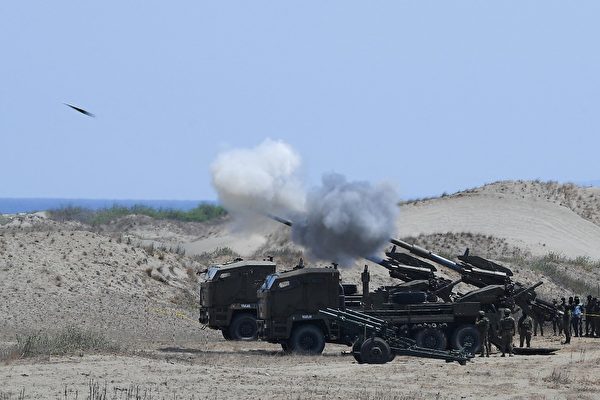In the recent US-Philippines joint military exercises held at the end of April and the beginning of May, several small teams flew to three small islands located strategically in the Luzon Strait. The presence of these small teams indicates that the US Marine Corps conducting island-hopping tactics exercises is moving with allies to places where they may potentially face off against the Chinese military in the future.
Reported by The Wall Street Journal on May 26th, this is a military exercise where the Marine Corps is preparing for a real-world conflict. They are fine-tuning a strategy that they deem crucial for fighting China on nearby islands.
These teams belong to the 3rd Marine Littoral Regiment of the US Marine Corps. Established in March 2022, this regiment is part of the comprehensive redesign of the US Marine Corps to better address major power competition post years of combat in Iraq and Afghanistan.
The Northern Luzon Command of the Philippines previously pointed out that the Luzon Strait is a strategic location for troop deployments to gain strategic advantage and is considered a choke point for maritime and air traffic.
From April 22nd to May 10th, the US and the Philippines conducted the “Shoulder-to-Shoulder” joint military exercise for the year 2024. It was noted that the exercise included several islands close to Taiwan, such as Itbayat, highlighting the potential role the Philippines may play in a potential conflict in the Taiwan Strait.
Reportedly, a team from Marine Littoral Regiment flew to Itbayat Island in the Luzon Strait to survey roads and bridges to determine which vehicles could operate during wartime. They then proceeded to the northern part of the island facing Taiwan for further observation.
Another combat group went to Mavulis Island, located just 88 miles north of Taiwan in the northern part of the Philippines, for ground reconnaissance to understand what preparations would be needed in that area in case of war. They identified the lack of ships, a crucial equipment needed during wartime to transport Marine Corps personnel and equipment between islands or from one coastal point to another. Without ships, the Marine Corps would be limited by the rugged terrain and narrow roads in the region, relying solely on helicopter transportation. However, helicopters are too conspicuous during war, and their transportation capacity is smaller compared to ships.
In a conflict, these Marine Corps personnel will carry missiles and radar, advancing forward as far and as fast as possible, moving through islands and coastlines in small units. They will continue forward so that Chinese missiles, sensors, and drones would be unable to locate them.
Commander John Lehane of the stationed regiment in Hawaii told The Wall Street Journal that the enemy will have to “expend a lot of resources to figure out where we are and what we are doing,” making their decisions more complex.
One of the goals of the Marine Corps is to initially entrap China in a conflict, buying time for other US military units to deploy.
Citing Benjamin Jensen, a senior researcher at the Center for Strategic and International Studies at the Marine Corps University, these smaller, more agile units will become coastal cavalry of the 21st century. He mentioned that ideally, these mobile units moving along the first island chain would constantly force China to search for them, burdening China’s intelligence network significantly.
Public information shows that the first island chain extends from Japan and the Ryukyu Islands in the north, through Taiwan, to the Philippines, the Sulawesi Islands, and down to New Zealand, serving as a primary defense line in US foreign policy and defense strategy.
To achieve all of the aforementioned objectives in actual exercises is no easy task for the US military, facing challenges in various aspects such as logistics.
Over the past two years, the 3rd Marine Littoral Regiment has trained in the Hawaiian Islands, conducted simulated warfare in California, and visited the Philippines four times. They have been practicing tactical communications while maintaining concealment, such as creating a significant amount of noise in the electromagnetic spectrum to confuse enemy forces.
In the national security policy document released by the Philippines last August, the country explicitly stated its position on a Taiwan Strait conflict. The document expressed concern that any military conflict in the Taiwan Strait would inevitably affect the Philippines due to the geographical proximity and the large number of Filipino citizens residing in Taiwan.
President Marcos of the Philippines previously stated, “We are at the forefront when it comes to tensions across the strait.”
The Philippines previously allowed the US military to use five military bases in the country and announced last year to add four more bases, bringing the total number of bases open to the US military to nine. Two of the newly added bases are located on Luzon Island, closer to Taiwan.
The Philippines stated that these locations are of great strategic significance. Experts like Randall Schriver, who served as the highest official for East Asia affairs at the Pentagon during the Trump administration, also mentioned that Luzon Island is of utmost importance to the US Army, especially as a potential launch site for rockets, missiles, and artillery systems to counter a Chinese amphibious invasion of Taiwan.

